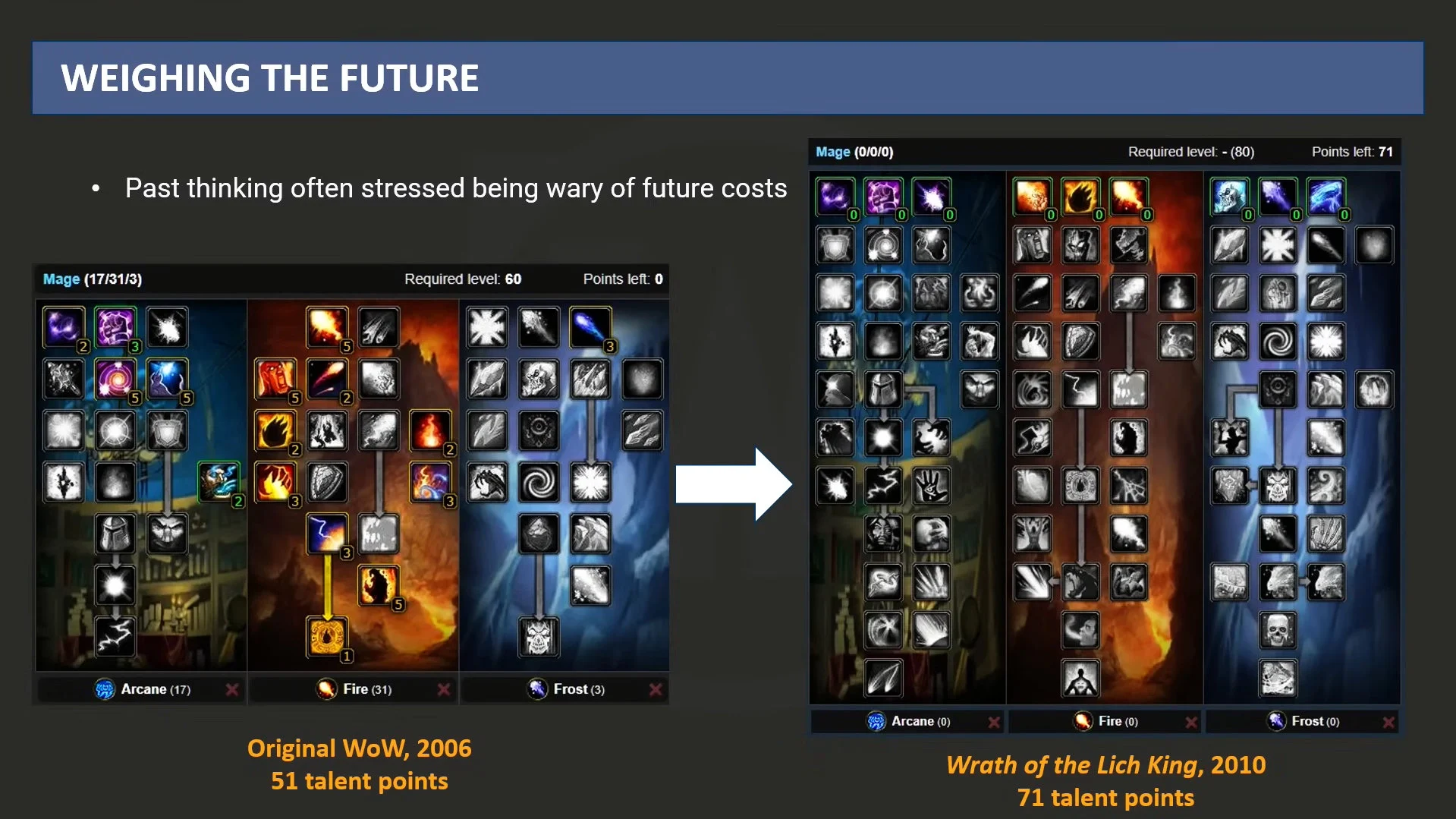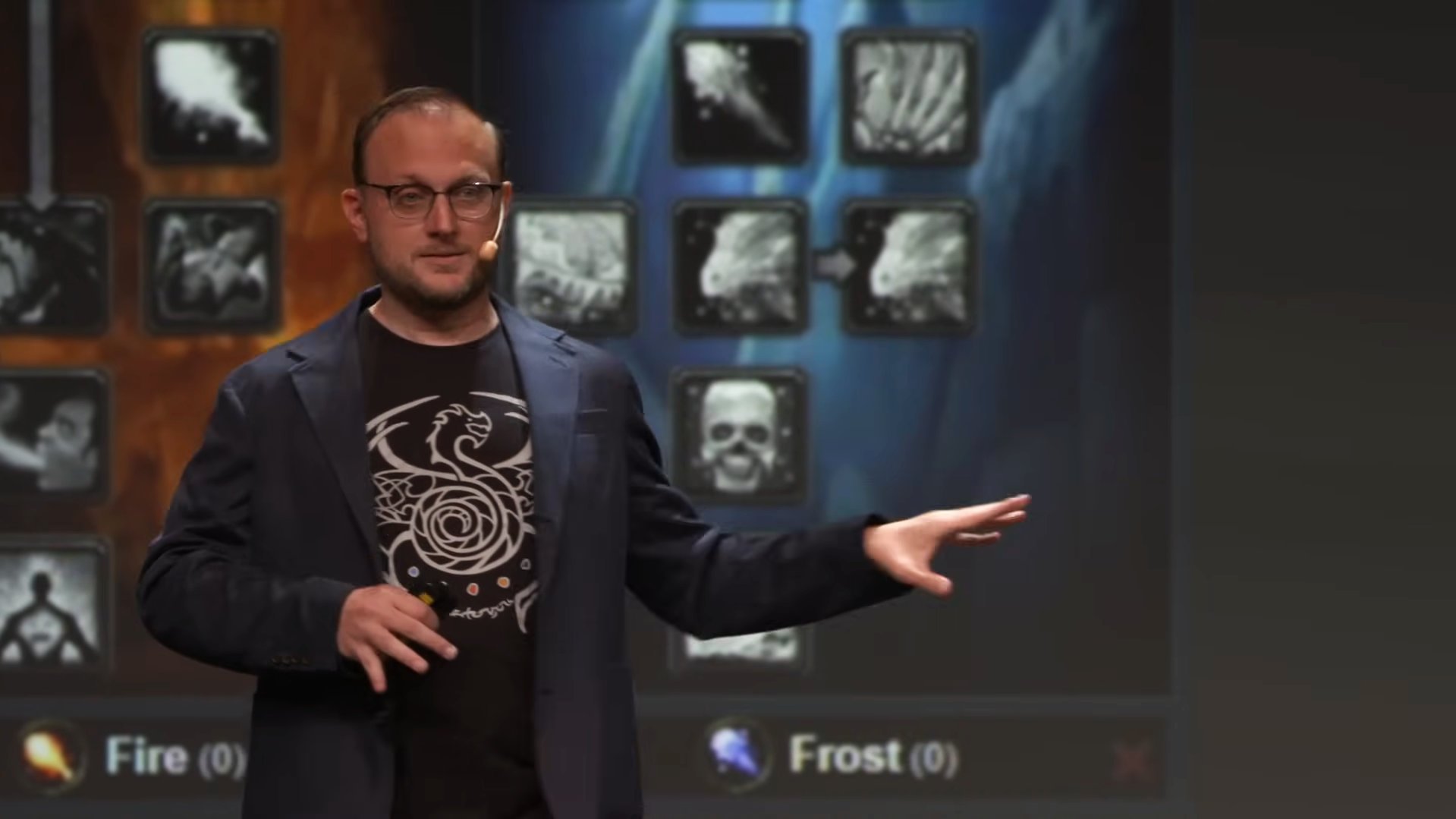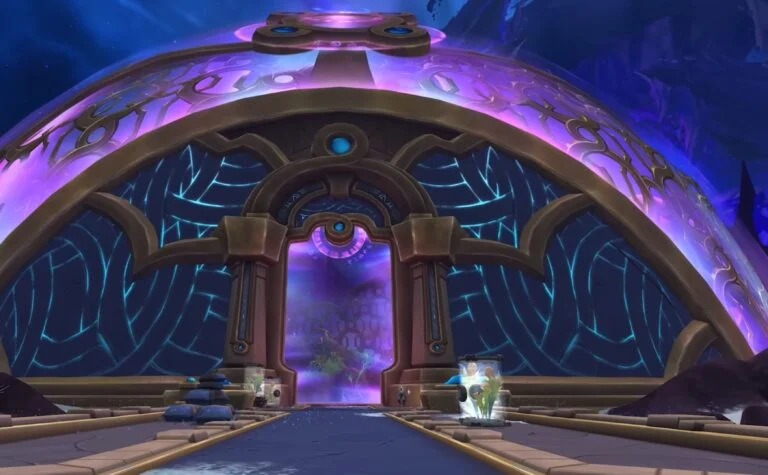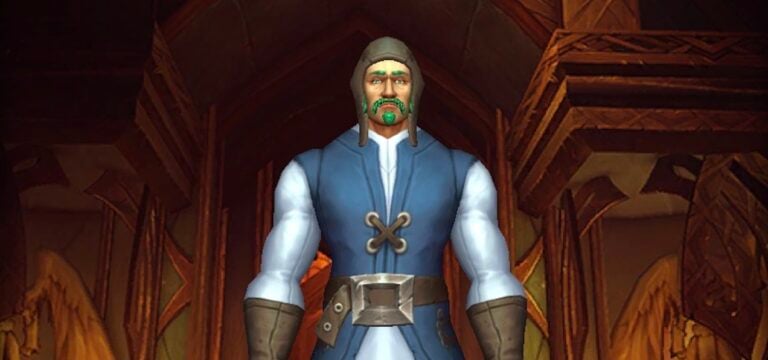At Nordic Game 2025 in Malmö, WoW’s Senior Game Director Ion Hazzikostas gave a rare and candid talk, not to tease expansions or spotlight patch content, but to reflect on 20 years of World of Warcraft and how the game’s design has had to evolve with its players. His talk on stage was titled “Meeting Players Where They Are,” and focused on what WoW got wrong, what the team learned from Classic, and why the future of live games is not about perfection, but trust.
Before we get started… did you know Ion was a lawyer who ran a top guild and community site (Elitist Jerks) before joining Blizzard? He has been on both sides of the game, from theorycrafting to leading its entire direction.
Here are the most interesting takeaways from Ion’s 1-hour session.
One Game, Many Playstyles
World of Warcraft is not just one product anymore. As Ion explained early on, it is now a platform with multiple experiences that all fall under the same €13/month sub:
- Retail WoW with the current expansions like The War Within
- WoW Classic, now with new content (aka “Classic Plus”)
- Shared cosmetics, patches every few months, and new expansions every 2 years
The biggest change since the release of WoW is probably that players no longer want the same thing. Some people run Mythic+ dungeons competitively, whereas others prefer to just collect mounts and explore old zones. Some players level alts, others play solo, and many simply do it all.
Instead of pushing everyone into one funnel, Ion says Blizzard now tries to support every playstyle, even though that makes game design more complicated.
Leveling, for instance, used to take over 200 hours to reach cap. Today, it takes closer to 20. As Ion put it, “Leveling is a much faster process. It’s literally 10 times as fast… compared to where we were 20 years ago.”

This change reflects modern player expectations. Many just want to reach endgame, try new builds, or unlock achievements, and WoW has changed to match that.
Design Missteps That Changed Everything
Ion was rather candid about Blizzard’s past design missteps, especially from the Warlords and Legion era. He admitted that the team:
- Pruned too many class abilities trying to simplify gameplay
- Locked cosmetics behind group-only content in an effort to “make WoW more social”
- Pushed identity-driven systems like Artifact Weapons and Covenants that forced players into hard, irreversible choices
The player backlash to these systems helped Blizzard realize that the game had not changed too much; the players had. People were min-maxing harder, switching builds more often, and expecting flexibility that early WoW never needed to provide.
Funny enough, Ion said he was originally supposed to give a similar talk back in 2020 for WoW’s 15-year anniversary, but as he looked through those old notes again, he realized he already disagreed with a lot of what he had planned to say. That alone says a lot about how much both the game and its leadership have changed.
Classic WoW Was a Wake-Up Call
When Classic relaunched in 2019, Blizzard expected nostalgia-driven players to re-embrace friction-heavy design. What they got instead was a giant reality check.
“They complained bitterly… ‘This is the least fun part of Classic, but we have to do it to play the game the way we want to today.'”
Players immediately found ways to optimize around the friction, like farming gold to respec constantly instead of sticking to one build. To Ion, it proved that the vision behind 2004 WoW had not been betrayed, but players themselves had evolved far beyond it.

That realization changed how Blizzard approaches design to this day.
Let Players Lead the Way
One of the strongest messages from Ion’s talk was that design should not fight player behavior.
“Once your game is out there… it is now equally theirs. It is their world that you need to be a caretaker of as well as the designer of.”
He compared this to the concept of “desire paths” in city/urban planning; those natural dirt trails people form through grass, showing how they really want to move. Developers can either support those paths or throw down hedges and barriers that just annoy people.
Ion said that Blizzard now tries to watch what players are doing and design around it instead of against it.
No Perfect System, Only Adaptation
WoW’s most celebrated systems have always had rather short shelf lives. Legion’s World Quests and Mythic+ were huge hits… until players got tired of them a few years later. Even perfect balance does not solve this.
Ion gave a clear example about this: when Frost Death Knights got buffed, tons of players swapped from Unholy. Then they complained Frost was overpowered. Blizzard fixed it, and then players went right back to Unholy. The meta changed purely on perception.

What matters is not mathematical balance – it is trust that things will change if needed! That is why Blizzard now does balance passes every ~2 weeks, not every few months like before.
The Real Currency: Trust
Near the end of his talk, Ion emphasized that trust is the single most important thing Blizzard can offer.
“For any live game, trust is the fundamental currency of the entire ecosystem.”
- Frequent updates tell players: we are listening
- Fast fixes show: we are not stuck defending a bad decision
- Transparency means: we are willing to admit mistakes
He reflected on how the new Dragonflight talent trees (added in 2022) are great now, but might collapse later with future expansions. The point was not to create a forever-perfect solution. The point was to make the game more fun today.
To wrap things up, Ion said the biggest lesson Blizzard has learned is not about class balance or UI. It is about designing for the present while staying flexible enough to adjust for the future.
World of Warcraft in 2025 is not about returning to its roots, it is about understanding what the players want right now and building around that, even if it means walking away from past ideas.
Or, in his own words: “It’s prioritizing player problems over design problems. Doing the things that matter to them as opposed to the things that bother you.”
For more insights from Ion Hazzikostas’s talk, you can watch the full session here:
If you want more updates on WoW, Blizzard news, or upcoming changes, head over to our main page for the latest.



